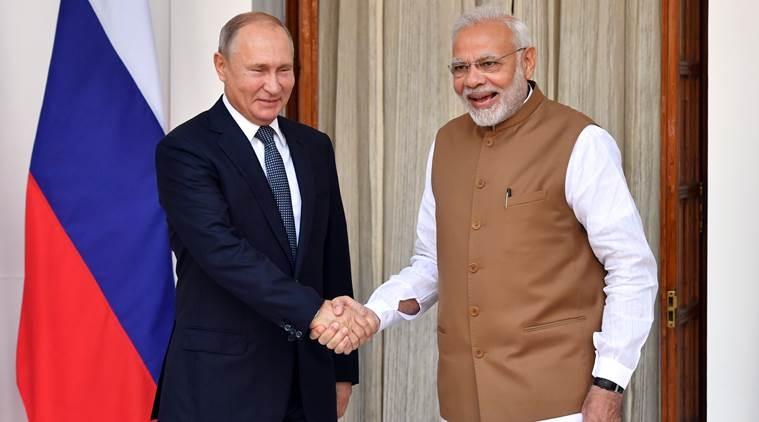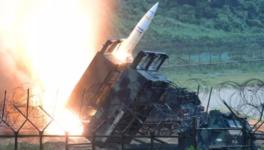Finally, India-Russia Clinch S-400 Missile System Deal

After much suspense, India and Russia finally on October 5, 2018 inked the $5.4 billion agreement for India’s acquisition of the vaunted S-400 Triumf anti-missile system during the visit of Russian President Vladimir Putin to New Delhi for the 19th annual summit between the two countries.
While an initial inter-governmental agreement had been signed in October 2016 on the sidelines of the BRICS summit, the deal has been under a cloud of uncertainty since then, especially of late due to the looming threat of sanctions by the US under its August 2017 CAATSA (Countering America’s Adversaries Through Sanctions Act) legislation which targets Iran, Russia and North Korea and countries that engage in significant military, intelligence-sharing or trade with them.
India had been trying, indeed hoping, for a sanctions waiver in advance of the deal from the US which, however, has not made its position clear, preferring to keep up the pressure. Regrettably, the Indian government was so apprehensive about the US reaction, that S-400 deal was highly underplayed.
The Putin-Modi summit had also been expected to announce deals for four Krivak class Frigates, two of which were to be made in India, and for manufacture in India of Kalashnikov AK-103 assault rifles but officials indicated that negotiations could not be completed in time.
Several other significant agreements between Russia and India were announced. Through a memorandum of undestanding between ISRO and the Russian Space Agency, Russia will extend full support for India’s manned space mission Gaganyaan scheduled for 2022 and, in particular, would train India’s cosmonauts. India would also set up a monitoring station in the Siberian city of Novorsibisk. Pacts on nuclear power were also signed with six to possibly 12 projects being set up in India over the next several years.
Other geo-political issues were also covered during the summit as might be expected from the presence of a high-powered delegation including the Russian Deputy Prime Minister and Foreign Minister Sergei Lavrov, along with a host of industry leaders.
But the S-400 deal was the unmistakable centrepiece of the summit, not just because of its value, but due to its geo-strategic significance.
The S-400 system
The S-400 missile system is a mobile, multi-layered system that can track and bring down multiple airborne targets, such as reconnaissance and fighter aircraft, including stealth aircraft or those with low radar cross-sections, drones and also missiles, depending on the specifics of the system. In general, the S-400 system consists of multi-function 360-degree radar, separate and autonomous systems for target acquisition and targeting, missile launchers with four launch tubes per Transporter Erector Launcher (TEL), and a command and control centre. An S-400 regiment typically has 2 batteries with 4 launchers each.
India has acquired five regiments, that is a total of 40 launchers, with deliveries expected to begin in two years. It is believed that three regiments will be posted along the Western front and two near the northern front.
The S-400 system that India has acquired is believed to be equipped with four different types of missiles. The premium version includes the very long-range 40N6E missile with 400-km range and altitude reach of apparently up to 185 km (600,000 feet) capable of intercepting intermediate-range ballistic missiles, the exact version India will receive not being known.
The other missiles available are the 40N6 with a lower altitude reach, long range 48N6 with 250km range, the medium range 9M96E2 (120km) and the short range 9M96E (40km). The system can simultaneously track 100 targets and attack 80 with two missiles each. India is believed to have ordered an inventory of 7,000 missiles of different categories.
Other Users
Defence analysts the world over are almost unanimous that the S-400 is the absolute best surface-to-air missile system currently available. If it can indeed, as it is widely believed it can, track and target 5th generation stealth fighters like the US F-35 and can also bring down cruise missiles and ballistic missiles with maneuvering capability, the S-400 will be a game changer.
The system entered into service with the Russian military in 2007 and has seen many countries wanting to acquire them despite US displeasure, and in preference to the much-touted US Patriot or Israeli anti-missile systems. S-400 systems defend Moscow and are also deployed in Hmeimim airbase in Syria where they have exercised a powerful deterrent influence.
The first country to buy S-400s was China in 2015 and deliveries began this year. It is not clear if the Chinese systems have the very long-range 40N6 missiles. China has also become the first to be sanctioned under CAATSA for the same in September of this year. Turkey, a NATO ally of the US, has gone ahead and signed a provision agreement with Russia but has not taken the next decisive step, and conversations with the US are believed to be continuing. Saudi Arabia, Egypt, Iraq and others are also in negotiations with Russia, and everyone is watching the US response carefully.
India is believed to be preparing for deployment of S-400s not for defence of the national capital but along both the Western and Northern fronts, three regiments in the former and two in the latter region. Some reports have it that in the Northern front, the Indian Air Force is likely to utilise the S-400s to compensate for the current paucity of high-performance fighter aircraft, hence the mention of the Rafale and the S-400 in one breath by the IAF Chief at a recent presser. In this eventuality, it is likely that the S-400 would be used in both defensive and offensive roles, rather than only the former.
Geo-politics
The big question now is how will the US respond? Will it impose sanctions against India?
The US has been sending highly mixed signals to India in this regard. A spokesperson for the US Embassy in Delhi, reacting to the announcement of the deal, said that CAATSA was not intended to punish friends and allies, but to penalise “malign behaviour” by certain countries.
Spokespersons from the State Department and from the US Senate have said CAATSA sanctions have automatic triggers and no general waiver can be expected, only case-by-case waivers, which are usually meant to cover transactions for things like spares for legacy Russian equipment as with, say, Vietnam or Indonesia. US Defence Secretary Jim Mattis has been pushing hard for a US waiver on the S-400 deal, and has even formally written to Congress for the same, arguing that the emerging strategic partnership with India and also India’s growing interest in US military hardware, could be jeopardised.
But everyone in the US knows that the final call will be taken by the highly unpredictable President Donald Trump. His messages have been more mixed than others’. He continues to rail against India for trade imbalance, has put overt and public pressure on Indian taxes on various US goods especially the iconic Harley-Davidson motorcycles, is severely constricting space for H1-B visas to Indian tech workers, has mocked Indian accents and has just recently called India a “tariff king,” all while also speaking of “friend Modi!”
The problem is that President Trump is caught in a legislative problem not entirely of his own making but one definitely stemming from his over-centralised one-stop-shop style of running the administration. Indians should be very familiar with problems this can cause!
When CAATSA was passed by Congress, Trump wrote two quite detailed notes, calling the legislation “flawed” and “unconstitutional” on grounds that it trampled on the executive’s exclusive province in conduct of foreign policy, and curbed the administration’s ability to negotiate specific issues. Yet, at the same time, if Trump gives in to India’s demand for a waiver, he will appear weak and lenient towards Russia.
In geo-political terms, if the US imposes sanctions on India, it risks losing an important potential ally and counter-weight to China, and pushing India closer to the emerging Russia-China axis. The US also risks losing out on future lucrative orders from India for military hardware.
On India’s part, India would love to get a US waiver and keep both the US and Russia happy. But the world is not an ideal place! After a long hiatus, India has finally given Russia something to be happy about, pausing at least for a while the slide in India-Russia relations. India had been moving away from strategic ties with Russia especially regarding procurement of Russian military equipment in favour of an Indo-US alliance and growing purchase by India of US defence hardware. In response, along with growing US-Russia tensions, Russia had been moving closer to Pakistan and cementing its ties with China. With the US being increasingly unpredictable and unreliable, this left India uncomfortably isolated.
Does the Modi government see it this way? Will the S-400 deal mark a reset in India-Russia relations and possibly even India-US relations? And will the US impose sanctions on India? Who will blink first?
Get the latest reports & analysis with people's perspective on Protests, movements & deep analytical videos, discussions of the current affairs in your Telegram app. Subscribe to NewsClick's Telegram channel & get Real-Time updates on stories, as they get published on our website.






















